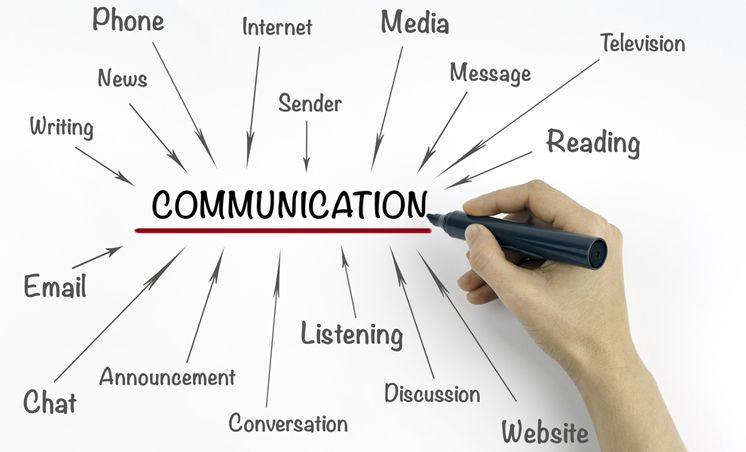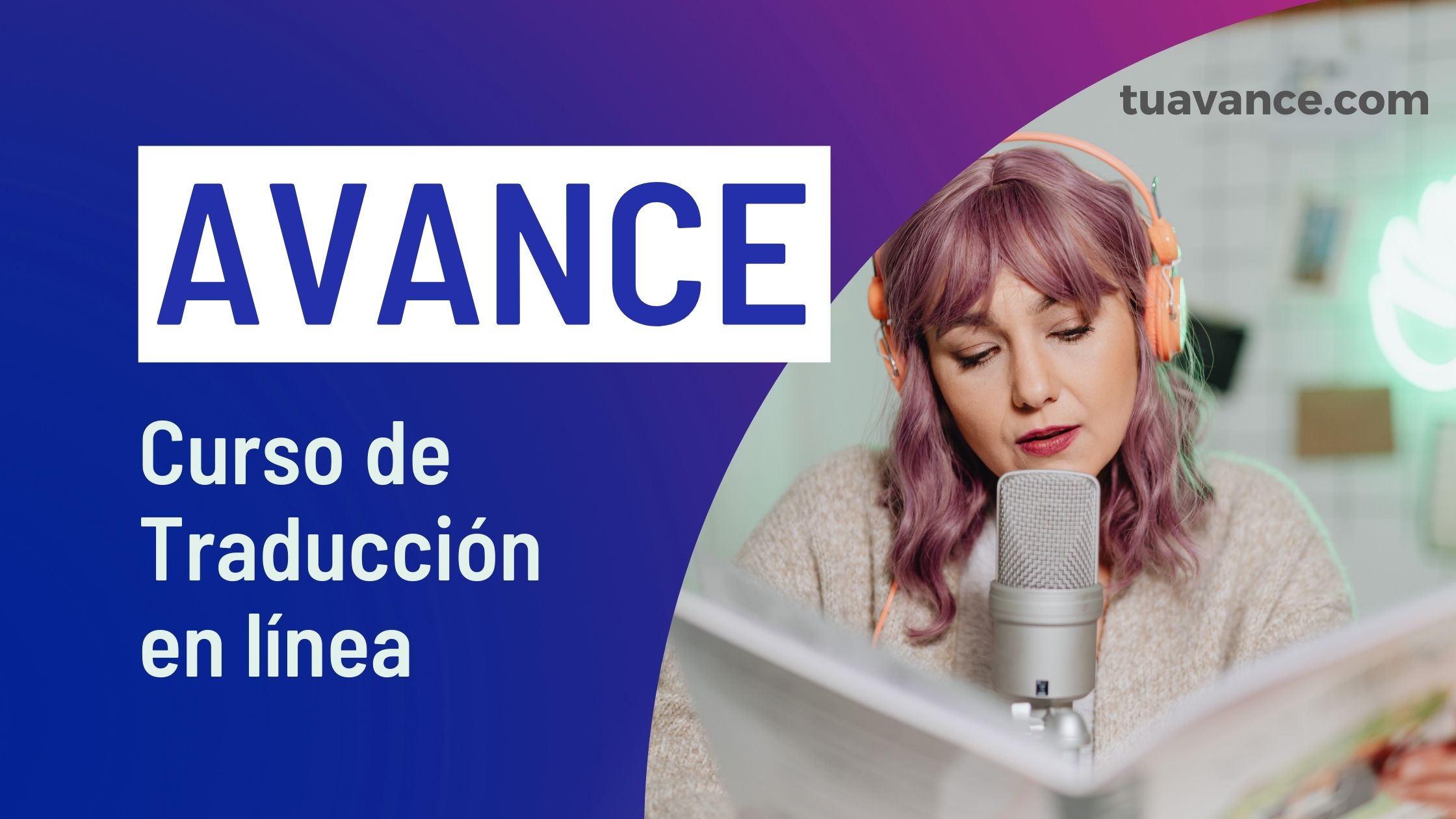
The focus of every lesson or part of a lesson should be the performing of some action – learning how to do something, to communicate something which he/she could not do before learning the lesson. Learner can get answer to his/her question i.e. why is he/she learning a particular lesson or any linguistic item. The learner understands the importance of learning the same as it is going to help him/her in day-today communication. So, here a learner understands and then acts.
All these actions can be approached on a variety of different levels of sophistication, and bearing them in mind throughout the teaching/learning process.
The Whole is more than the sum of its parts
One of the most significant features of communication is that it is a dynamic and developing phenomenon. In other words it cannot easily be analyzed into component features without its nature being destroyed in the process. It is possible to identify various formal features of the way language is used communicatively and these can be studied individually. But the ability to handle these elements in isolation is no indication of ability to communicate. What is needed is the ability to deal with strings of sentences and ideas and in the oral modes processed in real life situations.
Thus, a crucial feature of a communicative method is that it operates with stretches of language above the sentence level, and operates with real language in real situations. Interestingly, this principle may lead to procedures which are themselves either synthetic or analytic. A synthetic procedure would involve students in learning forms individually and then practicing how to combine them; an analytic procedure would introduce complete interactions of texts and focus for learning purposes on the way these are constructed.
So, language used in the whole context is more useful than only studying the parts of it.
The processes are as important as the forms
A method which aims at developing the capacity of the learners to communicate in a second language will focus at repeating continuously until they are able to communicate well in a target language. So that the learners are able to practice the forms of the target language, i.e. English within a given framework. It simply means when the language is used for communication, the language forms are used for a process of communication. There are three such processes –
Information gap
Communication is part and parcel of every human being. When two or more people are conversing in day-today life, one may know something which is not known to the other. The purpose of the communication is to bridge this information gap. In classroom situation pair work undertaken to complete an incomplete picture is the best example of transferring information as each member of the pair has a part of total information and attempts to convey it verbally to the other.
Choice
Another crucial feature of communication is that the learners have option, both in terms of what they will say and, more particularly, how they will say it. From the point of view of the speaker this means that s/he must choose the ideas which s/he wants to express with appropriate linguistic forms. Foreign language learners may face problems in making choice in this regard.
Feed back
This process is implicit in the above two processes. When two persons take part in an interaction, there is normally some aim behind communicating and in what way other person reacts is evaluated in terms of that aim. So, the strategies involved in this process are important.
Learning by doing
It is now widely accepted that education must be ultimately learner-centred more than the teacher-centered. The teacher may go on teach, but if the learner is not making any effort, then there is no point of teaching. The teacher must involve the learner and must be judged in terms of its effects on him/her. Another consequence is that learning becomes to a large extent the learner’s responsibility. The teacher helps, advises, and teaches, guides, the learners themselves have to learn. The learner has to be involved in the activity. Only by practicing, acting, actually doing, the learners can learn to communicate.
Mistakes are not always a mistake
While developing communicative ability of the learners, trivial mistakes of grammar or pronunciation does not matter as long as the learner gets his/her message across. In the initial stage of learning to communicate in a foreign language, mistakes are bound to happen. The learners commit mistakes because they are trying to do something which they have not been told or shown how to do, how to speak which they have not mastered. It means they are not really making mistakes. If the teacher corrects each and everything at every level, the learners may lose their confidence of using the language for communication.
Principles of Communicative Language Teaching
- ‘Authentic language’ in real context should be introduced in the classroom whenever possible. It is the language used for day-today communication or functional purpose.
- By teaching language, learner should be able to make out speaker’s or writer’s intention. So that they will be communicatively competent.
- There should be connectivity among all the language skills such as listening, speaking, reading and writing together since they are regularly used in real life.
- The target language is a vehicle for classroom communication, not just the object of study. Hence, attention should be given to teaching language for communication.
- One function may have different linguistic forms. As the language is taught for the functional purpose, a variety of linguistic forms are presented together.
- Students have to learn language properties i.e. cohesion and coherence which are helpful to combine sentences together. It is essential for them as they work with language at the discourse or super sentential (above sentence) level.
- In CLT, games, role plays, group work, pair work, etc. play an important role as they have certain feature in common to learn language effectively.
- Errors are tolerated and treated as a natural outcome of the development of communication skills.
- Proper situations should be created by the teacher so as to promote communication in the classroom.
- The social contexts of the communicative situations are essential for giving meaning to the utterances.
- The grammar and vocabulary that the students learn follow from the functions, situational context and the role of the interlocutors.
Communicative Ability and Communicative Competence
For effective communication one must have ability to communicate properly and have communicative competence.
According to H. G. Widdowson, communicative abilities are ‘those skills in which the system is realized as use. Communicative abilities embrace linguistic skills but not the reverse. Communicative abilities are ways of creating or recreating discourse in different modes.’
These opinions about communicative abilities suggest that these are the abilities which involve linguistic as well as other skills essential for conversation, communication or discourse to take place.
On the other hand communicative competence has been defined in various ways. According to Littlewood, communicative competence means, ‘a degree of mastery of a very considerable range of linguistic and social skills which depend in part on the learners’ sensitivity to meaning and appropriacy in language and on his/her ability to develop effective strategies for communicating in the second language.’ (Littlewood, 1981.87)
- Johnson and K. Marlow say that communicative competence is ‘the ability to be appropriate, to know the right thing to say at the right time.’ (Johnson and Morrow, 1981.2)
International Encyclopedia of Education defines communicative competence as the «effective use of language in social contexts.» (The International Encyclopedia, 1985.834)
According to Widdowson, communicative competency is «the ability to produce sentences for communicative effect.» (Widdowson, 1978.1)
- It is revealed from the above definitions that communicative competence is –
- The ability to use language appropriately in a given social context.
- The ability to be appropriate to know the right thing at the right time.
- Linguistic competence plus an understanding of proper use of language in various contexts.
- Knowledge which is additional to linguistic competence.
- Ability to communicate something which is grammatical, proper, socially accepted, formally possible, fluent in a particular context.
In this way communicative competence includes both grammatical knowledge and the ability to use this knowledge to perform different kinds of functions like enquiring, suggesting, greeting, denying, advising, reporting, apologizing, inviting and promising.
Dimension of Communicative Competence
- Grammatical Competence
- Sociolinguistic Competence
- Communicative Competence
- Strategic
- Competence
- Discourse Competence
Components of Communicative Competence
Grammatical Competence
Grammatical competence, which refers to Chomsky’s notion of linguistic competence, is indispensable for the practice of linguistic formation of the language. The focus is on suitable structure which helps the learners to use the language appropriately and freely.
Sociolinguistic Competence
Sociolinguistic competence refers to an understanding of the social context in which communication takes place, including role-relationships, the shared information of the participants and the communicative purpose for their interaction.
Discourse Competence
Discourse competence refers to the interpretation of individual message elements in terms of their inter-connectedness and of how meaning is represented in relationship to the entire discourse or text.
Strategic Competence
Strategic competence refers to the coping strategies that communicators employ to initiate, terminate, maintain, repair, and re-direct communication.
In CLT classrooms, the teachers need to create activities that would necessitate learners to practice well in the target language.
Classroom Activities in CLT
There are various types of exercises and activities in communicative approach which «help students to achieve the communicative competence, and engage learners in communication» (Richards, 2001). Communicative activities play vital role in communicative language teaching. These activities are helpful for the teachers to broaden their repertoire of techniques and activities so as to enable the learners to communicate more effectively in foreign language. Communicative activities are purposeful and objective oriented.
According to Littlewood, the communicative activities can be represented diagrammatically as follows. (Littlewood, 2003.86)
- Structural activities
- Pre-Communicative activities
- Quasi Communicative activities
- Functional Communicative activities
- Communicative activities
- Social interaction activities
In these two major categories, the first types (Pre-communicative activities) serve to prepare the learner for later communication. The two sub-categories of pre-communicative activities are:
Structural activities: Focus is on the grammatical system and on ways in which linguistic items can be combined.
Quasi- Communicative activities: Focus is on one or more typical conversation exchanges. Some resemble drills, but other is closer to dialogues. Drills and dialogues can be combined so as to provide a bridge from formal exercise to communicative use.
Communicative Activities – also have two sub-categories:
Functional Communicative activities include such tasks as comparing sets of pictures, noting similarities and differences, working out continuously following directions and so on. In these activities learners must work towards a definite solution for a problem.
Social interaction activities comprise exchange of words, converse with others, improvisations and debates. Here, teachers prepare learners about the varied social contexts in which they will need to perform outside the classroom using different social interaction activities.
There is no clear dividing line in reality between these different categories and subcategories; they represent differences of emphasis and orientation rather than distinct divisions. E.g. cued dialogues can be undertaken both as pre-communicative activity and as communicative activity. Similarly it would be arbitrary if we try to specify how much attention must be paid to communicative function before an activity can be called quasi- communicative, or how significant social meaning must become before it falls into the social interaction sub category. This distinction depends on the varying orientation of individual learner.
Difference between pre-communicative and communicative activities
The following chart shows the difference between pre-communicative and communicative activities.
Pre-communicative (non-communicative) activities
Communicative activities
A
Aims to develop grammatical competence
Aims to develop communicative competence
B
Focus on the product of isolated utterances.
Focus on the appropriate selection of utterances for communication.
C
Practice of language patterns or elements
Practice of total skill of communication.
D
Function is to prepare the learner for later communication.
Function is to make the learner to actually communicate.
E
Learners have controlled practice.
Learners use language creatively.
F
Teacher intervention
No teacher intervention
G
Emphasis on form, not on context.
Emphasis in on context, not on form.
H
One long item
Variety of language items.
I
Examples: drilling, question – answers, sentence patterns, etc.
Examples: Role simulation, dramatization, group discussion, dialogue, debate, etc.
Learner’s/Teacher’s Role in Communicative Language Teaching
In CLT classroom teachers play a vital role in teaching/learning process of English. Teachers select learning activities according to the interest of the learners and engage them in meaningful and authentic language use.
There are various roles to be played by the teachers in order to facilitate the language learning process. According to Hedge (2000.63), a communicative classroom involves the teacher in «setting up activities, organizing material resources, guiding students in group works, engaging contributions, monitoring activities, and diagnosing the further needs of students.»
Richards Rodgers (2001) also describes the roles of the teacher as: needs analyst, counselor, and group process manager. Similarly, Harmer (1991) as cited in Nunan and Land (1996) describes the roles of the teacher as: Controller, assessor, promoter, participant, resource, tutor and investigator. Of all these roles, Nunan and Lamb suggest that it is the teacher as organizer that is the most important and difficult from the perspective of classroom management.
In order to perform all these roles effectively, teachers should be competent enough in all aspects of language teaching. In line with this, Hedge (2000.67) states that, «teachers need to build competence and confidence in fulfilling these various roles and in-service training is necessary within institutions to ensure that, in any moves towards implementing communicative approaches in the classroom, teachers are properly supported.
Role and Relevance of CLT Concepts in Present Research
Since the main aim of the present research is to investigate teachers’ and students’ difficulties in teaching/learning process of English language, and support the teachers with an in-service training programme by using Communicative Approach which is essential in an ESL (English as a second language) environment, it is noteworthy to furnish the role and relevance of CLT concepts in the present study.
Language is an inevitable phenomenon which permeates the human life. Of all languages, English is the most important language for communication. Naturally, English has become the language of worldwide communication rather than a language of literature. Hence the prime need of the learners is not to know the theoretical knowledge of English but to have an ability to understand and be understood in that language.
In the past it was sufficient to focus only on structural accuracy when learning a language was an entirely academic advantage and an obsession to acquire a new language. But in today’s world, language teaching is no longer considered a luxury but an obvious need. The language teaching methods in the past were based on linguistic competence. The establishment of basic principles of CLT was a reaction in opposition to the previously prevailing language teaching methods. Communicative language teaching aims at developing and improving knowledge and skills that facilitate the learners to make their message effective and successful.
The main goal of communication is the successful transmission of information, not the achievement of grammatical correctness. By widening the horizons with other kinds of competence, CLT initiated progressive and effective ways of teaching. CLT uses and teaches as it is used in every day real life. Students are given the notion of language as real, lived experience. Socio-linguistic, discourse and strategic competences are integral part of communicative language teaching
The use of CLT in the second language classroom is a means of changing the attitude of the students towards language learning as well as positively influencing their way of learning. Over-emphasis on grammatical correctness and fear of making grammatical mistakes has negative effects on students. Such as being stressed at class and experiencing sense of failure. CLT creates congenial atmosphere in the classroom in different ways: the teachers emphasise on fluency and correctness to learn the target language than correcting the structures and giving instructions on language rules or grammar (Mangubai etal, 2004.292)
The focus of CLT is on success rather than failure. The students are encouraged to rely on their own ingenuity and performance skills – namely their strategic competence when speaking. Its emphasis is on the learner». (Savignan cited in Magngubhai 2004, 292)
The four basic components of communicative competence summarized by Hymes are argued by some applied linguists as vague theoretical ideas which can hardly be put into practice. The applied linguists draw attention to the fact that ideas of appropriateness and correctness very much depend on the cultural norms of a particular society. They are in a way right in their argument. Language itself is an intrinsic part of culture. Hence, learning a language also implies learning a culture as well. CLT integrates socio-cultural context with language teaching programmes and thus aims at developing students’ sense of what is right and what is wrong in English.
Linguists have pointed out, according to academic research that they have not found one single best method for all learners in all contexts and that no single method appears to be naturally superior to other methods.
It is neither possible always nor appropriate to apply one and the same methodology to all learners whose objectives, environments and learning needs are varied and different.
CLT is considered one of the best methods for use in the second language classroom for several reasons: One, it gives confidence to the students to learn the second language and use it as and when required. Two, CLT draws attention to the importance of socio cultural skills. Three, the learners are given the realistic idea of language and are provided with a sense of what is appropriate and right in a given culture. Four, the learners learn English language and English culture simultaneously. It is vital and imperative both for teachers and learners, living as they do in a globalized world, to adopt and maintain the effective methods of language teaching/learning offered by CLT.
Constant migration of people has become part and parcel of today’s globalized world. Hence, English teaching/learning has become inevitable for anyone intending to move onto other states/countries either for higher studies or better careers. In this context, it is necessary to consider the lag between the aspiration for better prospects in life and the existing situation of teaching/learning of English language in schools especially the municipal corporation schools. Hence, the present research study is undertaken to bridge this gap by finding ways and means to know the difficulties of teachers and learners and develop a methodology that will enable them to improve the standards of teaching/learning process of English at school level.
Procedure of the Test to the Students
A total number of 200 students from class VIII and IX standard of various Municipal Corporation Schools were gathered in one of the municipal schools in two spells and the tests on four language skills were given, data was collected, analysed and interpreted in the next chapter.
Flowchart of the Research Design
The research work during July 2008 to March 2011 was done as per the steps shown in the following flowchart.
A Flow Chart
Submission of the research report
Selection of the problem
DTP and binding of final computerized research report
Review of related literature
Formation of objectives
Writing rough research reports and corrections in it
Formation of hypothesis
Suggestions for further research study
Sample selection
Findings, conclusions and recommendations
Preparation of research tool
Implementation of Pilot study
Verification of Objectives
Testing of hypothesis
Data collection with the help of questionnaires and its analysis
Analysis and interpretation data
Pre-observation of the lessons and its analysis
Data collection from students’ tests in all four language skills
Implementation of the training programme for the teachers
Post-observation of the teachers’ lessons
Discussion with the teachers and Guidance to the teachers
SOURCE:
https://www.ukessays.com/essays/english-language/characteristics-of-communicative-language-teaching-english-language-essay.php










